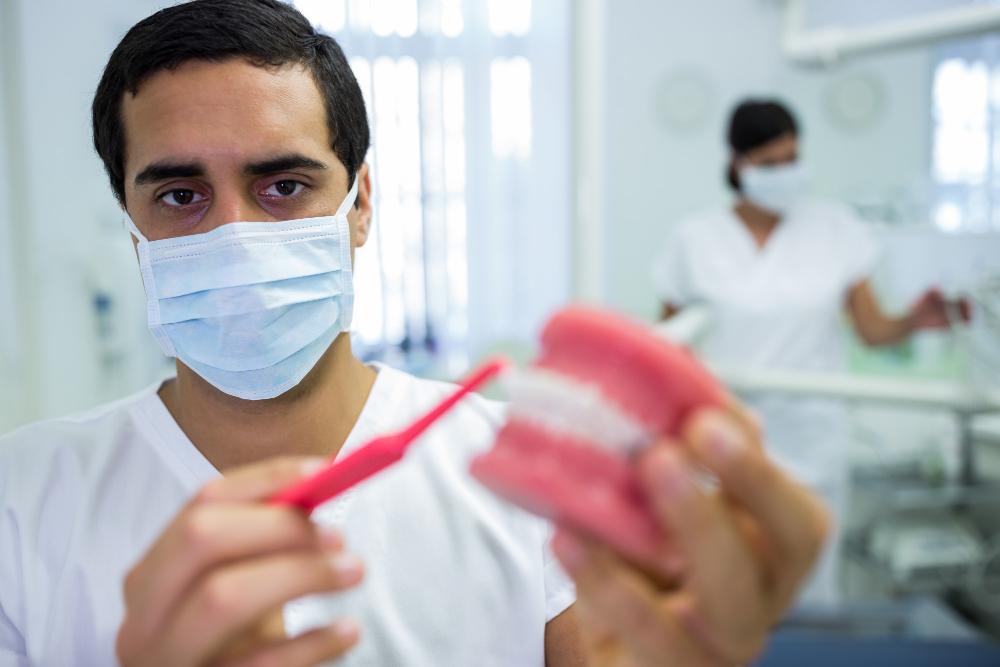A Comprehensive Guide to Health and Safety Standards for Dental Professionals

Health and safety have always been cornerstones of dentistry. Every dental professional, from the hygienist to the oral surgeon, works in close contact with patients where the risk of exposure to infections, chemicals, and physical hazards is high. Adhering to established standards isn’t just about compliance it’s about ensuring trust, safety, and care for both patients and staff.
One of the most visible examples of compliance is the consistent use of personal protective equipment (PPE). Masks, eyewear, gowns, and nitrile gloves form the daily shield that keeps dental professionals safe. Yet, these tools are only one part of a much larger system of health and safety practices that clinics must follow to maintain the highest standard of care.
The Foundation of Dental Safety Standards
Health and safety regulations in dentistry are largely guided by organizations such as OSHA, the CDC, and state dental boards. These bodies set expectations for infection control, hazardous material handling, and workplace ergonomics. Compliance helps reduce liability while ensuring that every patient interaction happens in a safe, controlled environment.
Beyond national regulations, dental practices often implement internal policies tailored to their specific workflows. This might include detailed sterilization protocols, waste disposal methods, or air filtration systems designed to minimize the spread of airborne contaminants.
Infection Control Protocols
Sterilization and Disinfection
Every reusable instrument must go through a strict sterilization cycle—cleaning, packaging, and autoclaving. High-touch surfaces, such as dental chairs and counters, require frequent disinfection with approved cleaning agents.
Hand Hygiene
Proper hand hygiene remains one of the most effective methods for preventing cross-contamination. Handwashing before and after glove use, along with alcohol-based sanitizers, is non-negotiable in every dental setting.
PPE Standards
Each procedure requires appropriate protective gear. For example, surgical masks may be adequate for routine checkups, but N95 respirators might be necessary for aerosol-generating treatments.
Chemical and Material Safety
Dental professionals also handle materials that carry chemical risks. From sterilization agents to composite resins, improper handling can lead to burns, respiratory issues, or other health concerns. Safety Data Sheets (SDS) must be accessible in every clinic, and staff should be trained to use chemicals according to manufacturer guidelines.
Proper ventilation systems also play an essential role, especially in areas where aerosols, gases, or fine powders are present.
Ergonomics and Workplace Safety
The physical demands of dentistry are often overlooked. Long hours in awkward positions can lead to chronic back, neck, and wrist problems. To counter this, many dental offices invest in ergonomic chairs, adjustable lighting, and training on posture-friendly techniques.
Safe handling of equipment—like X-ray machines or heavy dental units—also falls under workplace safety. By reducing physical strain, dental professionals protect their long-term health and improve their ability to deliver consistent patient care.
Training and Continuous Education
Health and safety standards are not static. Regulations evolve, new technologies emerge, and best practices shift. That’s why ongoing training is essential. Clinics often schedule regular refresher courses, mock safety drills, and updates on new regulations to keep staff informed and prepared.
Professional organizations also provide certifications and courses, ensuring that dental teams remain at the forefront of safety innovation.
The Patient’s Perspective
Patients may not know the details of sterilization cycles or OSHA regulations, but they notice the visible aspects of safety: gloves, masks, and clean equipment. A well-structured safety culture communicates professionalism and care, making patients more confident in their choice of provider.
Transparency also builds trust. Some practices post their infection control protocols in waiting areas or discuss them during patient consultations, showing that safety isn’t hidden—it’s prioritized.
Final Thoughts
For dental professionals, health and safety standards form the backbone of daily practice. From infection control to ergonomics, each step is designed to protect both staff and patients. Meeting these standards isn’t a burden—it’s an investment in trust, efficiency, and long-term well-being.
As dentistry continues to evolve, one thing remains constant: a commitment to safety will always define the quality of care.





